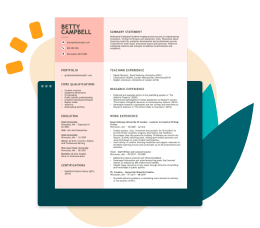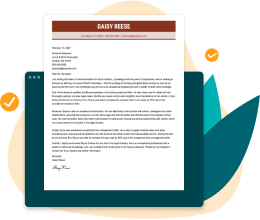Use Any Example
to Build Your Perfect CV
Watch this quick video to learn how to pick the best CV example for your industry and how to customize it instantly with our CV Maker. Save time, stand out, and create a job-ready CV without second-guessing what to write.
Job-Specific CV Examples
Accounting CV examples
50Administrative CV Examples
99+Billing & Collections CV Examples
Business Operations CV Examples
53Computer Software CV Examples
12Construction CV Examples
42Copywriting CV Examples
Culinary CV Examples
46Customer Service CV Examples
72Data Systems Administration CV Examples
36Dentistry CV Examples
Driving CV Examples
34Electrical CV Examples
31Engineering CV Examples
99+Finance CV Examples
36Food Service CV Examples
92Healthcare Support CV Examples
40Human Resources CV Examples
39HVAC CV Examples
19Information Technology CV Examples
20Janitorial CV Examples
26Law CV Examples
28Maintenance CV Examples
25Marketing CV Examples
14Mechanics CV Examples
19Nursing CV Examples
56Pharmaceutical CV Examples
4Production CV Examples
11Quality Control CV Examples
2Real Estate CV Examples
3Retail CV Examples
26Safety & Security CV Examples
Sales CV Examples
18Social Services CV Examples
16Statistics CV Examples
Web Development CV Examples
How to Tailor Your CV to the Job
Tailoring your CV to each job greatly improves your chances. Use these steps to customize your CV and catch recruiters’ attention every time.
- Use a pre-formatted CV template to save time and ensure your CV looks professional and well-organized.
- Incorporate relevant keywords from the job description to show recruiters you meet their requirements.
- Start each phrase in your CV with a strong action verb to clearly highlight achievements that match what the employer is looking for.
- Use numbers or percentages to quantify your achievements and demonstrate the impact you’ve had on past roles.
- Highlight research experience, teaching, grants, and publications if you’re applying for academic or research roles.
- Try a CV Maker (like ours!) to access professional templates and customized phrases tailored to your target job title.
Frequently Asked Questions
How do I determine whether I should use a CV or a resume?
Using a CV versus a resume depends on what job you’re applying for, where that position is located, and whether an employer requests one.
To decide, check the job post. Otherwise, search online about the application standards of the country where you’re applying.
How to turn a CV into a resume?
You can transform your CV into a resume by reducing your document’s length to one or two pages. You can achieve this by selecting the necessary information relevant to your desired job. Then, reorganize your layout to fit the three classic resume formats.
Is it worth getting a CV done professionally?
Writing a strong CV takes time, but if you need one fast, try our CV Maker for guided, automated help and professional design. Or, have our expert resume writers craft a personalized CV for you through an easy online process or brief consultation.
How long should a CV be?
A CV has no set page limit and is typically more detailed than a resume. Employers expect comprehensive career info and sometimes personal details. Most careers can be summarized in two to three pages, but up to 10 pages is acceptable for senior roles, especially in academia or the sciences.
Should I include references in my CV?
No, you shouldn’t include references in your CV—unless the employer specifically asks for them. Including the phrase “References available upon request” is also an outdated practice that takes up valuable space in your CV. If you want to provide references in your job application, submit them in a separate document.
How do I explain employment gaps in a CV?
For employment gaps over a year, address them in your CV summary or work history by including the gap and mentioning any relevant training, courses, or projects you completed during that time. Better yet, explain the reasons for the gap in a well-written cover letter.
What are the best hobbies and interests to put on a CV?
Choose hobbies and interests that relate to the job you’re applying for. Employers seek candidates who fit their company culture. For instance, listing language skills or interests like history and photography can strengthen your application for a travel writing position.
What are examples of the differences between CVs and resumes?
CVs and resumes do have some differences; here are examples:
- CVs tend to be longer than resumes and feature more sections.
- CVs are primarily used to apply for academic and scientific positions in the U.S.
- CVs are more likely to feature photos than resumes.
What are some good CV skills examples?
Good CV skills include teamwork, communication, problem-solving, time management, adaptability, leadership, critical thinking, and relevant technical skills. Additionally, in-demand skills such as data analysis, project management, or coding can help you stand out. Tailor your skills section to the role you’re applying for to increase your chances of standing out.
Where can I find CV profile examples?
You can reference the 100+ CV samples on this page, each with unique CV profile examples tailored to different roles and experience levels. A strong CV profile should introduce yourself by sharing your most job-relevant qualifications, skills, and education.
What should you not put in a CV?
Avoid including details that may cause bias, such as age, graduation dates, political or religious views, and personal information, including marital status. Photos can also lead to bias, though they’re standard in some countries. Always check local norms before adding one to your CV or resume.
Build a CV That Gets You Hired
Pick a template and create a polished CV fast!
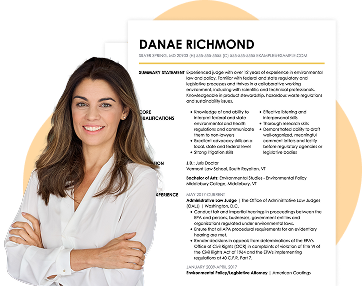


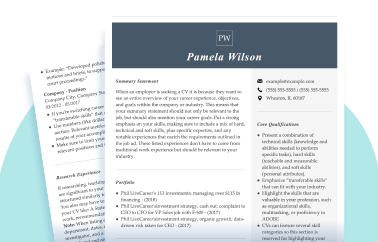
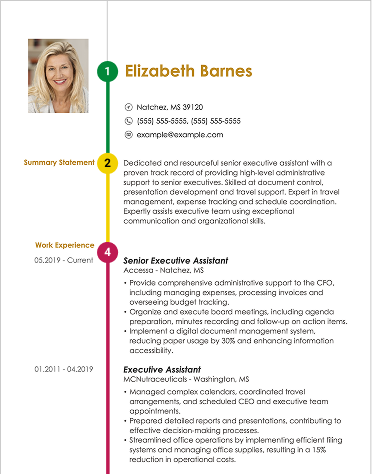
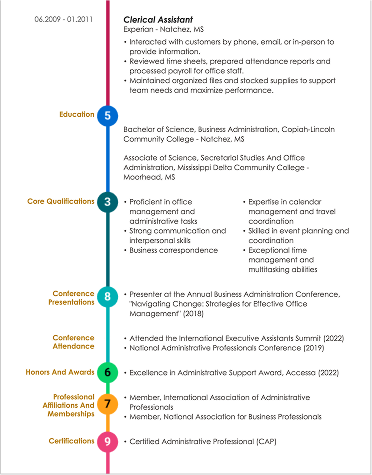


![How to Address a Cover Letter for 2025 [With Examples]](/lcapp/uploads/2018/06/shutterstock_1878566491-scaled.jpg)






